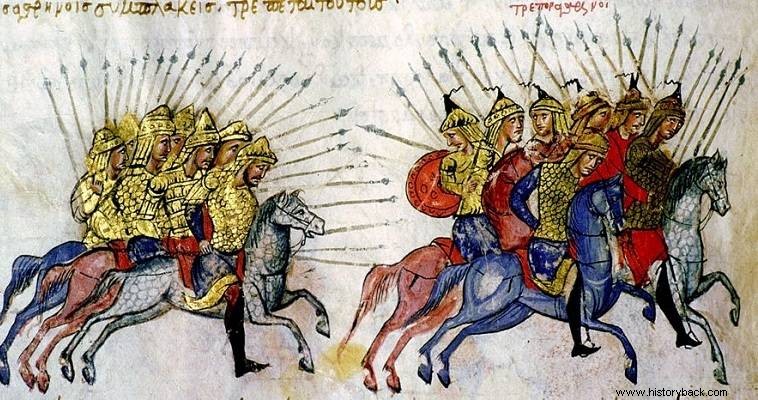
The battle of Vatheos Ryakos is one of the most interesting in Byzantine history. Opponents were on the one hand the Empire and on the other the sect of the Paulikians, a sect based on Gnosticism that had developed into a state within a state creating an independent territory in Tefrika, in present-day Sebasteia of present-day Turkey, with the assistance of the Muslims.
In the 9th century AD the Paulicians allied themselves with the Arabs and took part in all the Arab invasions of Asia Minor, under their leader Karvaias and then Chrysochiras. The Paulician iconoclasts had been fiercely persecuted after the end of the Iconoclasm. In 863 AD in the battle of Lalakaon Arabs and Paulicians were crushed by the imperial troops and Karvaias was killed.
After this Chrysocheir assumed their leadership and they even went so far as to attack Nicaea and destroy Ephesus. Emperor Basil I tried to get rid of the threat but he did not succeed, and Chrysocheir again attacked the imperial territories, reaching Ankara.
Pursuing and trapping
This situation could not continue and Basilius ordered, in 872 AD. (according to others in 878 which is probably also the most likely), the Domestic of the Schools (chief of the imperial guard) Christophoros to crush the Paulicians. Christophoros did indeed move against the enemies as they attempted to return to Tefrika laden with booty. However, Chrysocheir managed to avoid the Byzantine pursuit and pass to the Theme of Charisiano.
He then moved towards the Vatheos Ryakos Pass (present-day Kalinirmak in northern Cappadocia). In the meantime Christopher was following the enemies on foot. When he approached them he ordered the heads of the thematic units of the Armenians and the Harisians, with 5,000 men, to maintain close contact with the enemies informing him of any change in their direction of march.
Absolute surprise
He himself with the bulk of his forces stayed further back giving the Paulicians the impression that they were no longer being pursued. This force approached the Paulician camp at night. The latter, feeling safe, had encamped in the small valley before the pass.
The Byzantines moved quietly and occupied a wooded hill above the enemy camp. The two leaders of the 5,000 subject soldiers decided, despite orders, to take advantage of the complacency of their opponents and attack at dawn.
Indeed the Byzantines marched with a division of 600 men, the rest striking the shields and blowing the trumpets making an incredible noise. But the blowing of the trumpets was also a signal to general Christoforos to move. The surprise was completely successful. Receiving the attack of the 600 and soon the remaining 4,400 Byzantines of the vanguard, the Paulicians fled.
But they fell upon the power of Christoforos and were literally annihilated. The Byzantines pursued them at a distance of 50 km from the battlefield, slaughtering them mercilessly. Chrysocheir initially managed to escape with his bodyguards but was eventually surrounded on the so-called mountain of Constantine. There a Byzantine soldier who had previously been captured by the Paulikinaeans and had suffered a lot, Pouladis, struck him and threw him from his horse.
Chrysocheir was captured wounded and beheaded. His head was sent to Emperor Basil to Constantinople. The victory of the Byzantines was absolute. In 878 AD the imperial troops reached Tefrika and razed the Paulician capital. The battle is dated to 872 AD. by earlier historians. However, modern historical research places the battle in 878 AD. and the destruction of Tefrik as its direct result.
